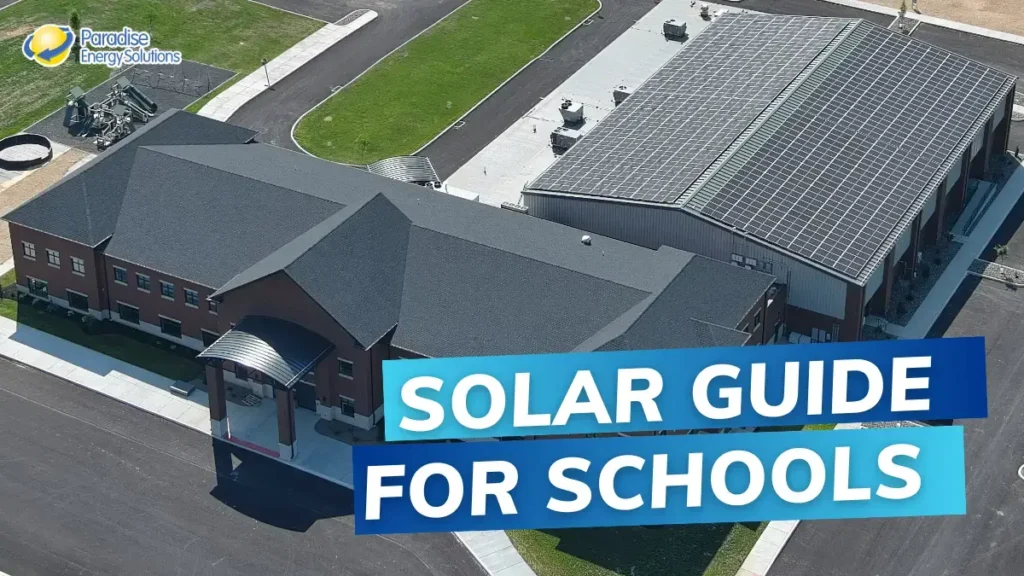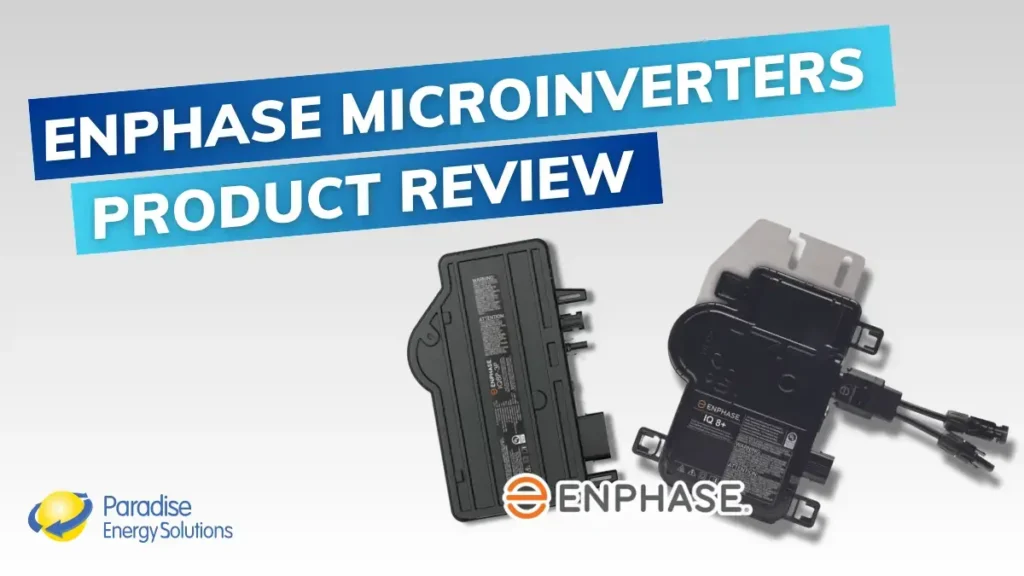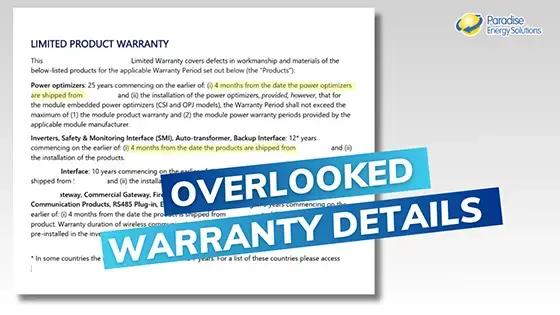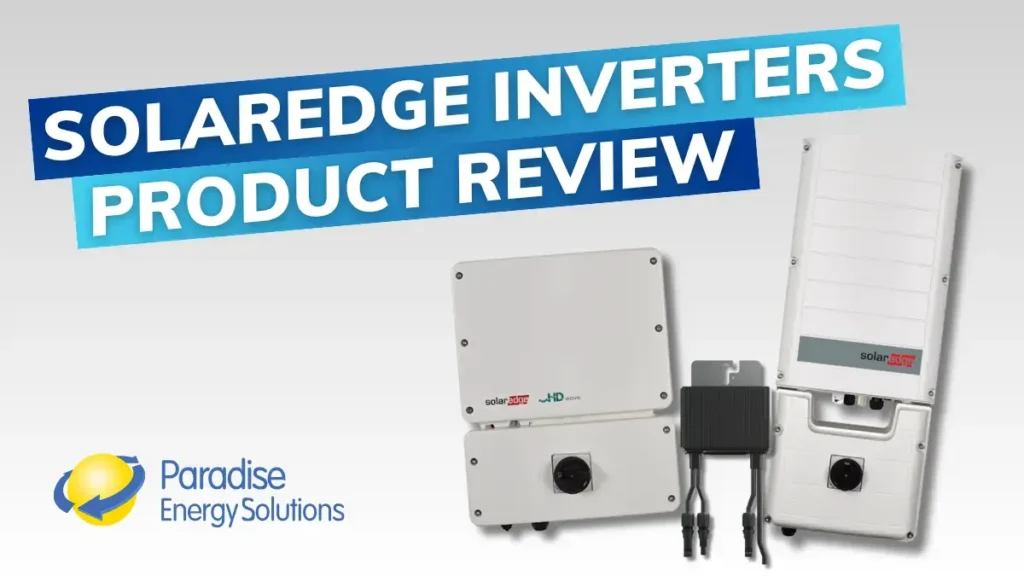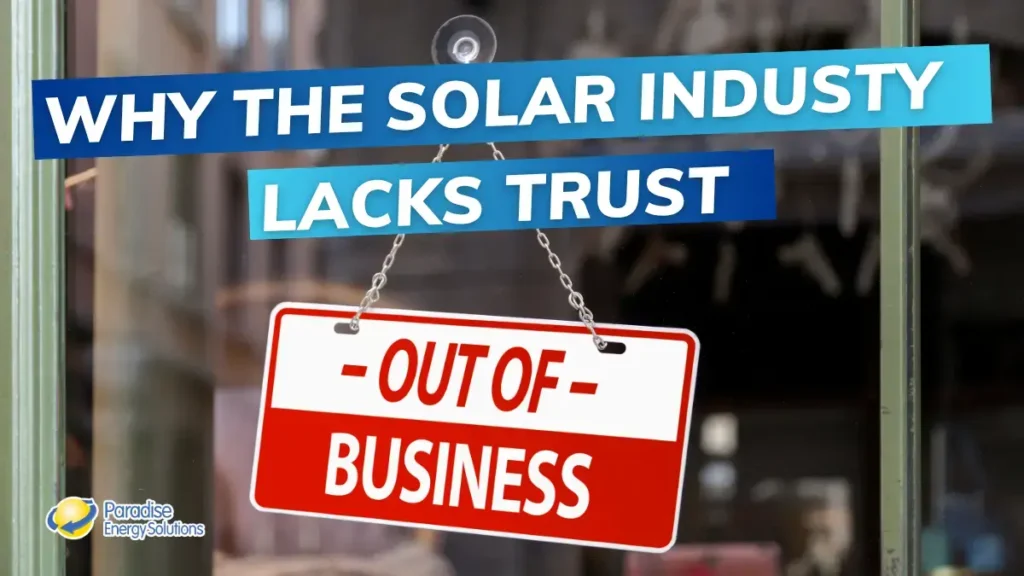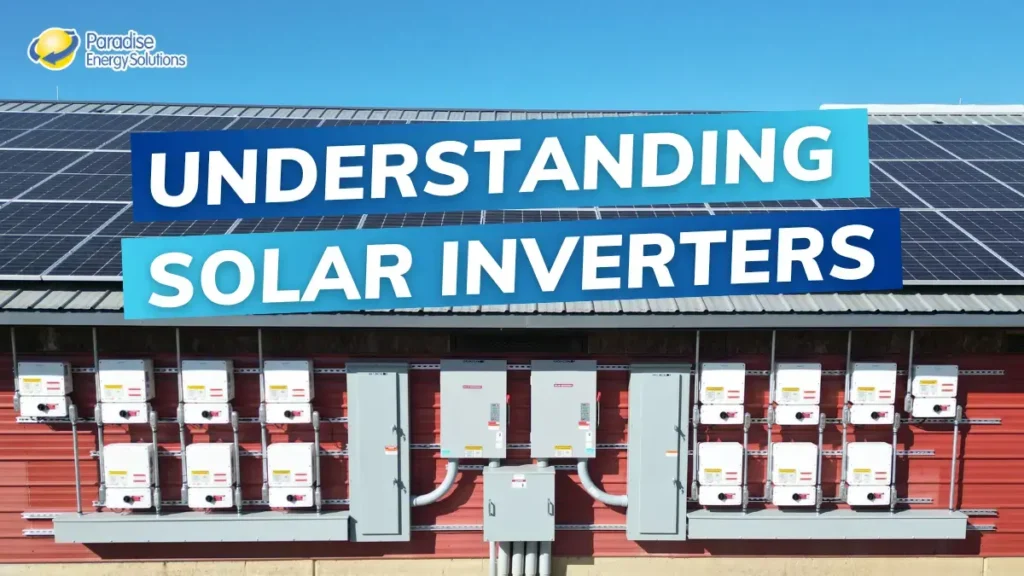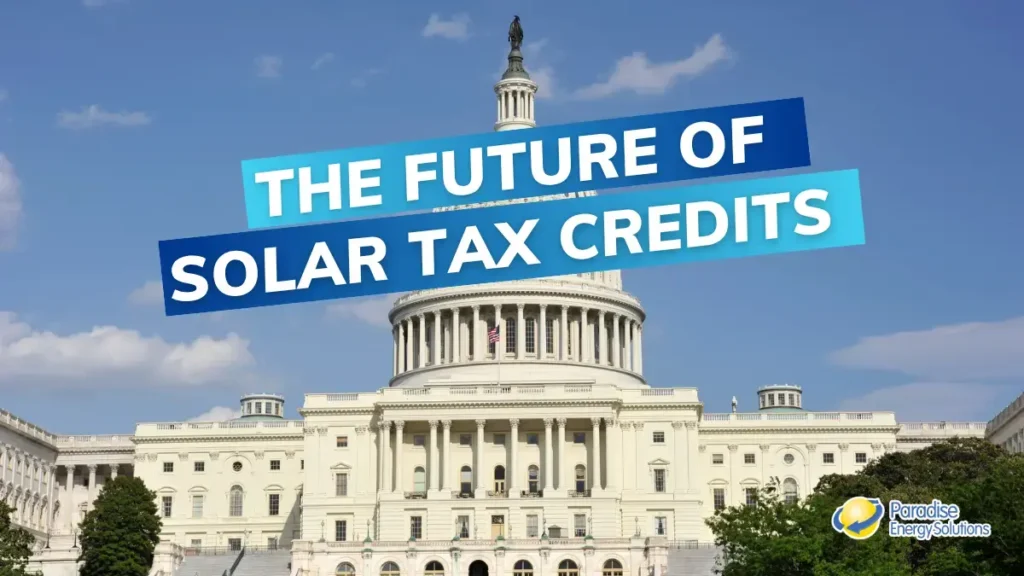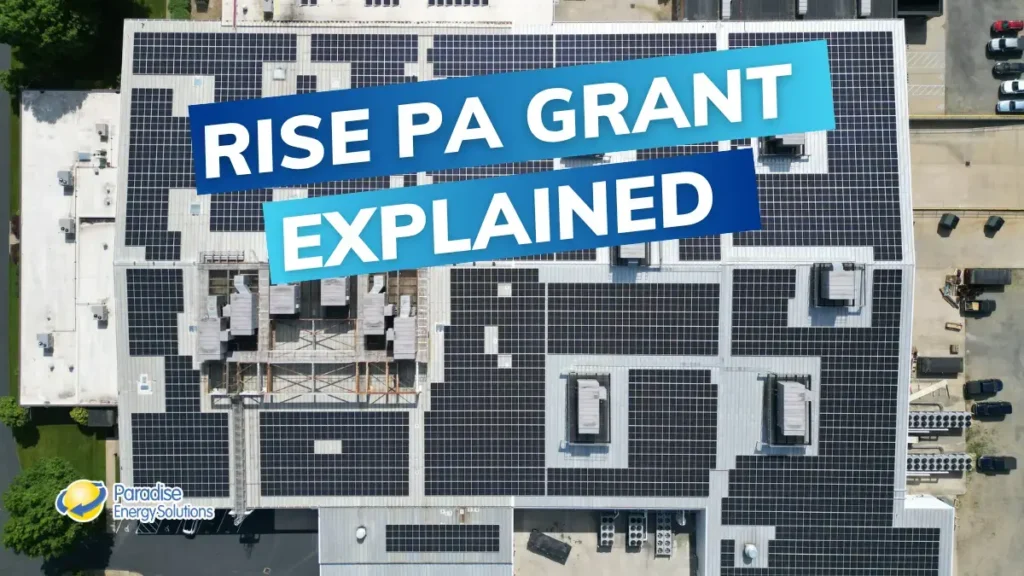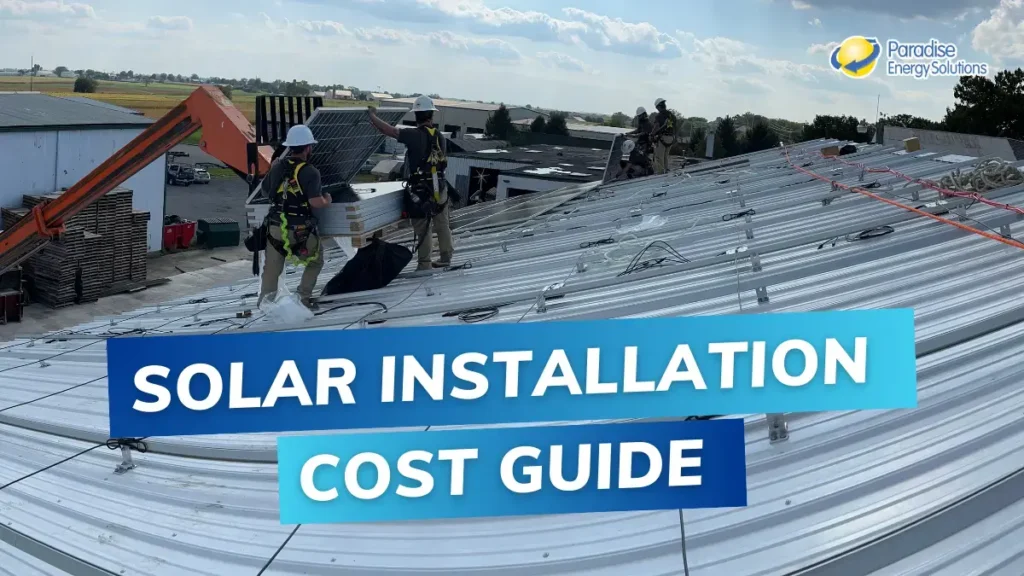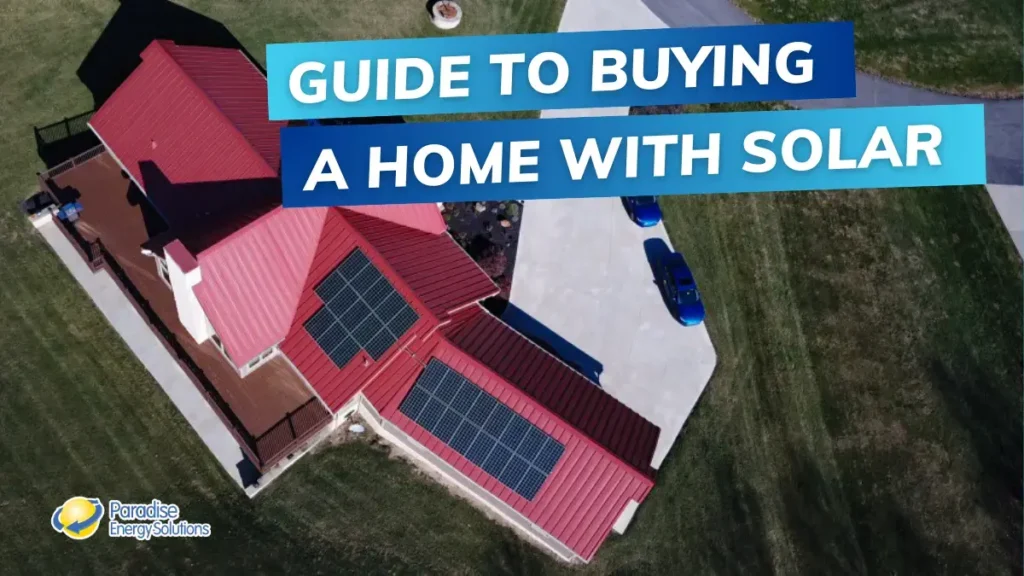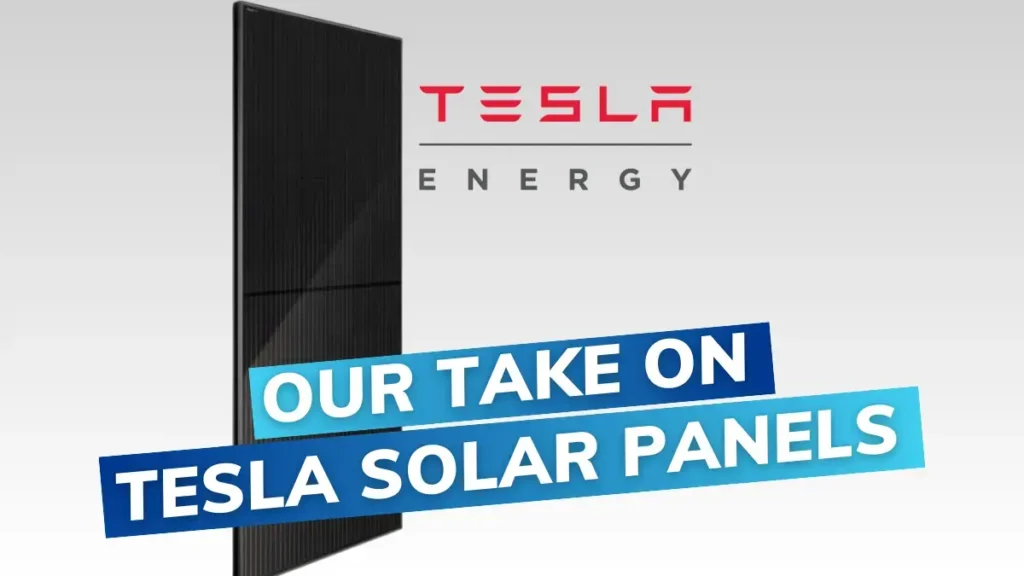As costs continue to rise, it has become even more challenging for schools and other nonprofits to control their expenses and keep their funds directed toward what matters most: educating our future generations.
That’s where solar comes into play. With rising electricity prices and new incentives available, solar energy for schools has never been more appealing. Solar offers a clean, renewable solution to stabilize energy costs, deliver consistent, reliable savings to your bottom line, and serve as an educational resource for your students.
This comprehensive school solar energy guide will help you, as a school administrator, operations manager, school board member, or community member, fully understand how public schools, private schools, and secondary institutions can benefit from solar energy’s cost savings.
Jump in to learn about solar’s benefits for schools and the entire process, from the initial site visit to selecting an installation partner to energize your system.
Let’s get started!
Benefits of Solar Energy for Schools
Financial Savings and Long-Term ROI
One of the most compelling reasons for schools to invest in solar energy is the potential for substantial cost savings. As energy prices continue to rise, solar power offers a reliable way to reduce utility bills and take control of a fixed cost. These significant cost savings can be reinvested into educational programs, facilities, and other crucial areas instead of writing a check to the utility company.
Beyond the long-term electricity savings, there are potential savings for schools that purchase the system outright. 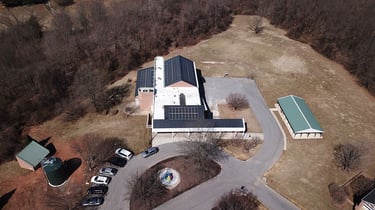
- The new Direct Pay option for nonprofits allows schools to receive a payment from the federal government for 30% or more of the solar installation cost. This significantly reduces the installation cost, making solar ownership more attractive for schools.
- Some states and utilities offer additional grants and incentives for schools to invest in solar. For example, Pennsylvania recently announced the PA Solar For Schools Program, which could provide schools with a grant of 50% of the installation cost.
- Solar Renewable Energy Credits (SRECs) provide an additional revenue stream for solar owners. For every 1,000 kWh generated by your solar system, 1 SREC is generated. This SREC can then be sold. The sale price will vary depending on market conditions.
- Net metering, where available, is another important benefit for solar owners. This allows system owners to use the utility grid as a storage device—pushing excess electricity generation to the grid and pulling electricity from the grid when production doesn’t meet their usage demands. Depending on your utility company, you may be compensated for excess electricity. However, the compensation rate and payment terms will vary.
Beyond the immediate savings, solar energy offers an excellent return on investment (ROI). Most schools recoup their initial investment within 5 to 10 years, depending on the financing method used. The energy generated is free for the remaining 20+ years of the system’s expected lifespan, making solar one of the smartest cost-containment decisions a school can make.
Educational Opportunities and STEM Integration
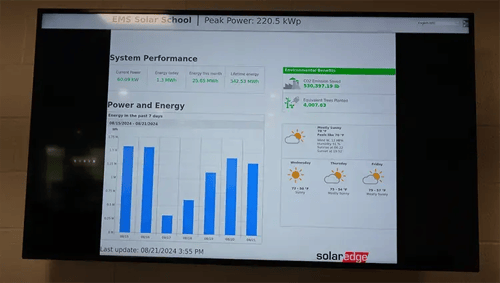 Installing solar panels at a school doesn’t just offer financial and environmental benefits—it can also become an invaluable educational tool. Solar energy provides unique opportunities to integrate real-world applications into science, technology, engineering, and math curriculum.
Installing solar panels at a school doesn’t just offer financial and environmental benefits—it can also become an invaluable educational tool. Solar energy provides unique opportunities to integrate real-world applications into science, technology, engineering, and math curriculum.
Teachers can use the school’s solar system as a live case study to help students understand energy generation and the science behind renewable resources.
Many schools have successfully incorporated solar monitoring dashboards, allowing students to track real-time energy production. This hands-on learning experience allows students to apply what they’re learning in the classroom directly to a real-world scenario, sparking interest in renewable energy fields and inspiring the next generation of electrical engineers, electricians, and other much-needed professionals.
Environmental Impact and Sustainability Goals
In addition to the financial and educational benefits, switching to solar energy allows schools to meet their sustainability goals and reduce their carbon footprint. Public and private schools are under increasing pressure to adopt eco-friendly practices, and solar energy offers an economically effective way to do that.
Schools can take charge of environmental and economic stewardship within their communities by choosing solar energy.
Understanding the Cost of Installing Solar Panels
The initial Investment
The installation cost for solar panels will vary greatly depending on several factors specific to your location, such as:
- your electricity usage,
- the installation type and location,
- type of equipment you select,
- your local weather conditions,
- utility interconnection costs (potential equipment upgrades and system distance from the interaction point), and more.
The chart below shows average installation costs based on monthly electricity bill amounts to help you understand what you can expect for your installation cost. You can also use our solar savings calculator to get a more accurate cost based on your location and average monthly electricity bill.
| Average Electric Bill | Solar System Size | Cost Before Incentives | 30% Direct Pay Amount | Cost After Incentives |
|---|---|---|---|---|
| $600 | 50 kW | $147,500 | $44,250 | $103,250 |
| $1,200 | 100 kW | $268,800 | $80,640 | $188,160 |
| $2,400 | 200 kW | $494,400 | $148,320 |
Solar Funding Options for Schools
Schools can finance solar energy projects using grants, third-party PPA agreements, or purchasing the system outright.
Purchasing Outright with Cash or Loan:
- Cash Purchase: Schools with available funds can purchase the solar system outright. While this requires the largest upfront investment, it offers the highest long-term savings since the school owns the system from day one and doesn’t have to make payments to a third party.
- Loan Financing: Schools can also finance the solar system through a loan. In this scenario, the school owns the system and repays the loan over time, often at a rate lower than their current electricity costs. After the loan is paid off, the school benefits from free electricity for the remainder of the system’s life.
Benefits: Full ownership allows schools to capture 100% of the energy savings, use the Direct Pay option and other grants, and capitalize on additional benefits like selling SRECs.
The Downside: your school will be responsible for the total upfront cost of the system.
Power Purchase Agreements (PPAs):
With a PPA, a third-party company installs and owns the solar system, and the school agrees to buy the electricity at an agreed-upon rate. This option allows schools to go solar with little to no upfront cost. In this scenario, the school would not be responsible for maintenance or any upkeep of the system during the duration of the PPA agreement.
Most PPAs have a buyout option, which allows the school to purchase the system and take ownership at a specified time or when it makes financial sense. PPA’s commonly last around 10 to 25 years.
Pros of a PPA:
- Little to no upfront cost
- No maintenance or system upkeep
- Electric savings
- The opportunity to purchase the system down the road
Cons to a PPA:
- All tax benefits (Direct Pay) and SREC income go to the system owner
- You’re giving a third-party access to your roof
- Possible price escalators and lengthy terms
Maintenance and Operation Costs
One of the biggest benefits of solar energy systems for schools is their low maintenance and upkeep costs. Solar energy systems are built with no moving parts, typically resulting in little upkeep over the system’s 25 to 30-year lifespan. This makes solar energy an ideal solution for schools that want a reliable, low-maintenance energy source.
Typical Maintenance Needs:
- Cleaning: The primary maintenance task is keeping the panels clean. In areas with heavy soiling or debris, panels may need to be cleaned occasionally to remove dust, dirt, and other common debris that can block sunlight and lower efficiency. However, most systems in average conditions only need rain to keep the panels clean.
- Inspections: Routine inspections are recommended to check for potential issues, like loose connections, wire damage, or inverter problems. We typically recommend these inspections occur in years 1, 5, and 10. This can help ensure the system continues to operate at peak performance. It’s also wise to check for any new shading caused by tree growth or newly constructed structures.
- Inverter Replacement: Solar panels are long-lasting, but inverters—the brains of a solar system converting DC energy into AC energy—are typically the components that will need to be replaced at some point. This should be planned for as part of the system’s life cycle—hopefully, while still under warranty.
Warranties and Guarantees:
- Solar Panel Warranties: Most solar panels come with two key warranties: performance and workmanship. Performance warranties typically guarantee that panels produce at least 80-90% of their original output for 25 or 30 years—workmanship warranties, which cover defects in materials or production, usually last for the same period.
- Inverter Warranties: Inverters usually have warranties lasting 10, 15, or 20 years, depending on the manufacturer and model. These warranties help schools avoid unexpected costs due to inverter issues.
- Installer Guarantees: Reputable installers like Paradise Energy Solutions offer additional guarantees to provide peace of mind. For example, our Triple Ten Guarantee covers:
- Ten years of guaranteed energy production ensures the system performs as promised. We’ll write you a check if it underperforms.
- Ten years of system monitoring, allows us to track the system’s performance and spot any issues early.
- Ten years of workmanship coverage protect against any installation-related issues. This also covers the labor costs associated with equipment warranty work.
Operational Costs:
- Low Ongoing Costs: If properly installed, a solar energy system’s ongoing costs should be relatively low. There’s a possibility that your inverters will need to be replaced, but expect little ongoing cost beyond that.
- Insurance Costs: Schools should consider the cost of insuring their solar system against potential damage from weather events and other unforeseen incidents. Adding solar panels to a school’s insurance policy may result in a small premium increase, but it provides peace of mind knowing the system is covered in case of damage.
Solar energy’s low maintenance requirements and minimal operational costs make it a practical, low-risk solution that offers substantial long-term benefits for schools. And with long-lasting warranties and installer guarantees, schools can be confident in their solar investment.
The Process Of Installing Solar For Schools
Site Visit
Before a school can go solar, it’s essential to determine whether solar energy is economically feasible for the site. This process typically begins with a site visit conducted by a solar energy installer. During this step, the installer will evaluate several key factors:
- Space Availability: Schools will need adequate roof space or open land for solar panels. Roof-mounted systems are most common, but if the roof isn’t suitable, ground-mounted systems can be a viable alternative. The installer will assess whether the available space can support the number of panels needed to meet the school’s energy needs.
- Existing Electrical Equipment: The solar design team must clearly understand the size and location of the existing electrical equipment. The transformer, electric meter, main distribution panel, and on-site generators must all be accounted for to design a solar system properly.
- Zoning Requirements and Building Codes: Local zoning laws may dictate where solar panels can be installed. For example, there may be guidelines regarding how close a ground-mounted system can be to neighboring properties.
- Utility Considerations: It’s important to coordinate with the local utility company to understand their net metering and interconnection policies. The utility could sometimes require equipment upgrades to support the solar system. These costs often fall on the customer installing the system. Your solar installer should be able to gather all this information for you.
The Quote
The solar company will use the site visit to gather all the necessary information needed to provide an accurate quote and preliminary system design.
At Paradise Energy Solutions, we will provide a detailed quote that includes a complete cost breakdown, a cash flow for the system’s lifespan, details of the equipment that will be used, and a preliminary system design.
The goal is to provide you with all the information you need to make an informed decision and guide you through the decision-making process—whether that involves one person, a school board, or an entire school community.
Selecting the Right Financing Option
Outright Purchase
When a school decides to go solar, selecting the right financing option is one of the most critical steps in ensuring the project’s success. Schools can finance their solar energy systems in several ways, but the choice depends on the school’s budget, goals, and long-term financial strategy.
If you plan to purchase the system outright, it’s most often best to work with your local bank to secure the necessary financing.
There are also several financial institutions that focus on providing financing for nonprofit organizations to install solar panels. Everybody Solar and Collective Sun are two we’ve worked with in the past. Collective Sun offers an appealing bridge loan to cover the time between installation and receiving funds from the Direct Pay option (it could take 1.5 years to receive your funds).
Power Purchase Agreement
A Power Purchase Agreement (PPA) can be an attractive option for schools that want to go solar with little to no upfront cost.
With a PPA, a third party installs, owns, and maintains the solar system, while the school agrees to purchase the electricity it generates at an agreed-upon rate instead of what they are paying their utility company.
When considering a PPA, it’s essential to select the right partner. Here are a few factors to keep in mind when evaluating potential PPA providers:
- Experience with Educational Institutions
- Reputation and Track Record
- Rate Structure
- Contract Length and Buyout Options
- Maintenance Care
Selecting a Solar Installer
The next step is choosing the right solar installer to ensure the success of the project. Consider the following when evaluating potential installers:
- Experience with Schools: Look for solar providers with a track record of working with educational institutions, nonprofit organizations, and other commercial businesses. They should be familiar with schools’ unique needs, including safety requirements and working around school schedules.
- Reputation and References: Ask for references from other schools or businesses that have worked with the installer. Check their online reviews to get a sense of the company’s reliability and service quality. Review their website and talk with various team members to get a feel for who they are.
- Warranties and Guarantees: Be sure the installer offers strong warranties in addition to the equipment manufacturer’s warranties. Reputable companies will offer performance guarantees, like Paradise Energy’s Triple Ten Guarantee, which includes 10 years of guaranteed energy production, system monitoring, and workmanship.
The Installation
Once the school has chosen the right financing option and selected an experienced solar installer, the next phase is the installation process. Proper planning is key to ensuring the installation is completed efficiently, safely, and with minimal disruption to school activities.
The timeline for installing a solar energy system can vary depending on the project’s size, the site’s complexity, and several other factors that are sometimes out of the installer’s control. However, a typical installation process generally follows this schedule:
- Permitting and Approvals (1-3 months): Before any physical work can begin, the installer must obtain all necessary permits and approvals from local authorities. This step can take several weeks to months, depending on the local zoning and permitting processes and the complexity of the system.
- System Design and Equipment Procurement (1-2 months): Once permits are acquired, the solar provider will finalize the system design and secure the necessary engineering approvals. Then, the necessary equipment, including solar panels, inverters, and racking systems, will be ordered.
- Installation (1-3 months): The actual installation of the solar panels and related equipment typically takes anywhere from a few weeks to several months, depending on the size of the system, the complexity of the installation site, and the availability of parts. During this time, installers will mount the panels, run wires, connect the inverters, and interconnect the system with the utility grid.
- System Testing and Commissioning (1-2 weeks): After the system is installed, the solar company will perform thorough tests to ensure everything functions correctly and safely. Once testing is complete and all required approvals from the utility company and other permitting agencies are received, the system can be energized.
The total installation timeline, from contract signing to the energized system, can range from 6 months to a year or more.
Interruptions to School Activities
One of the biggest concerns for schools is minimizing disruptions to daily activities during the solar installation. Fortunately, the process can be carefully planned to avoid major interruptions.
- Scheduling: Many schools choose to schedule the bulk of the installation work during summer break, winter holidays, or other times when students and staff are not on campus.
- Working Hours: Most of the installation work can be completed with very few interruptions. However, there will be a scheduled power outage when the system is interconnected to the utility grid. This can be scheduled at a time that won’t impact the school’s daily operations.
- Temporary Closures: For roof-mounted systems, certain parts of the building and property, such as parking lots or specific sections of the building, may need to be temporarily closed for safety reasons. Ground-mounted systems may also require part of the school grounds to be fenced off. However, these disruptions are usually localized, and with proper planning, they can be minimized.
Paradise Energy’s project managers will work closely with school officials to create an installation timeline around school activities, avoiding disruptions and keeping the construction zone safe.
Case Studies from Schools That Have Installed Solar
Paradise Energy Solutions has had the opportunity to partner with several public and private schools, universities, and nonprofits. Check out the videos below to hear from a few of those schools, and then visit our project pages for Kent State University College of Podiatric Medicine, CSAAC, and Caroline County Public Schools in Maryland.
Frequently Asked Questions
What are the upfront costs, and how long will it take to break even?
The cost of installing a solar panel system will vary depending on how much electricity you use, the installation cost, and other factors. When purchasing the system outright, you can expect to pay between $150,000 and $500,000 or more before utilizing the Direct Pay option and other grants. Most break even in 5-10 years.
What financing options are available for schools?
The main benefit that is available to all schools is the Direct Payment option. This can cover over 30% of the installation costs. In addition, there are several other grants available, like the Pennsylvania Solar For Schools Program that could provide schools with a grant of 50% of the installation cost. Your solar installer will be able to help you find and obtain all qualifying grants and incentives.
How much will the school save on energy bills, and how will it affect our budget long-term?
Your electricity savings will depend on how much electricity you use and the size of the solar system. Systems will be sized to cover as much of your electricity usage as economically feasible.
Use our savings calculator to get a ballpark estimate of your savings.
What maintenance is required, and who is responsible for it?
Solar systems require very little maintenance. However, panel cleaning, inverter replacements, and check-ups are needed on occasion. Who is responsible for the maintenance depends on whether you own the system, have an installer warranty, or have a PPA agreement. If you have a PPA agreement, the maintenance would be the responsibility of the system owner.
What is the expected lifespan of a solar energy system?
Solar equipment has lengthy warranties and is expected to perform for 30+ years. Solar panels typically come with a 25—or 30-year performance and workmanship warranty. Depending on the brand and type, inverters come with a 10, 12, 15, or 20-year warranty.
Start Your School’s Solar Journey
Going solar is a smart, long-term investment that offers schools significant financial savings, educational benefits, and environmental stewardship. Your school can easily transition to clean, renewable energy with the right planning, financing, and installation partner.
But it’s not for everyone. To find out if solar is right for your school, request a free quote today to take the first step toward lowering energy costs and creating a sustainable future for your students.
If you’re not ready for a quote, continue your solar journey by visiting our Solar Learning Center, where you’ll find in-depth resources to help you make an informed decision.
